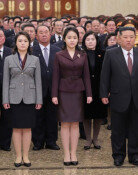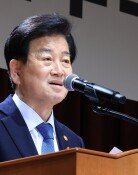`Bridge at No Gun Ri,` Account of Tragic History
`Bridge at No Gun Ri,` Account of Tragic History
Posted January. 03, 2003 22:42,

The Bridge at No Gun Ri, Written by Sang-Hun Choe, Charles Hanley and Martha Mendoza, Translated by Nam Won-joon
Published by Owl Books, 412 pages, 15,000 won,
On September 29 1999, the Associated Press broke the news that U.S. troops had bombed a large group of South Korean refugees in No Gun Ri on July 26 1950 and killed about two hundreds of civilians on about July 26 through 29 later that year near a twin bridge in the village.
This book is based on extensive three-years investigations by three AP reporters Sang-Hun Choe, Charles Hanley and Martha Mendoza, who won Pulitzer Prize later for their report on this hidden tragic story.
While conducting extensive investigations into killings at No Gun Ri, the three reporters found out that the documents containing communication reports made by the 7th U.S. Cavalry Regiment in July 1950 were missing in the American National Document Archive. Why those documents were missing? The communication reports could have told what really happened at No Gun Ri at that time and who were high-level decision makers.
The three journalists made another breakthrough in their investigations in July 2002. They learned from Mac Hilliard who is living in California that the 7th U.S. Cavalry Regiments communication reports did exist and they included documents that explained large-scale killings of civilian refugees in the end of July. Hilliard, who served as a communication solider at the 7th U.S. Cavalry Regiment, testified that he read and filed a report that U.S. troopers opened fire at about three hundreds of Korean civilians.
His testimony was not included in the original book published in 2001 since it came out while the Korean translation was being prepared. This book revealed Hilliards testimony for the first time.
After the AP report, No Gun Ri incident was defined as a massacre carried out by U.S. troops along with Milai killings, in which U.S. troops opened fire at about 500 civilians including women and children at Milai Village near Kwanggai in 1968 during the Vietnam War.
The massacre was disclosed by Timothy Hush, a reporter working with `Dispatch News Service` and led to a trial about those responsible for the killing. The trial, however, found only one officer, Lieutenant William Colley, guilty. He was later exonerated after serving three years in prison.
The U.S. and the Korean government released a report on the No Gun Ri incident respectively on January 12 2001. Then the U.S. president Bill Clinton expressed `deepest regret` while he was issuing a statement, but fell short of acknowledging the crimes committed by U.S. troopers. The report released by the Pentagon ruled out the testimonies that the villagers were bombed and strafed by American war planes from the air at least three times on July 26 and 27 1950, organized acts ordered by US Army commanders.
For those who want to know the truth about the No Gun Ri massacre, it will also be of help to read `No Gun Ri Still Speaks 50 years of struggle to reveal the truth against the U.S.,` a book written by Jung Gu-eun, a son of Jung Eun-yong, a survivor of the rampage.
Pyoung-In Song pisong@donga.com







